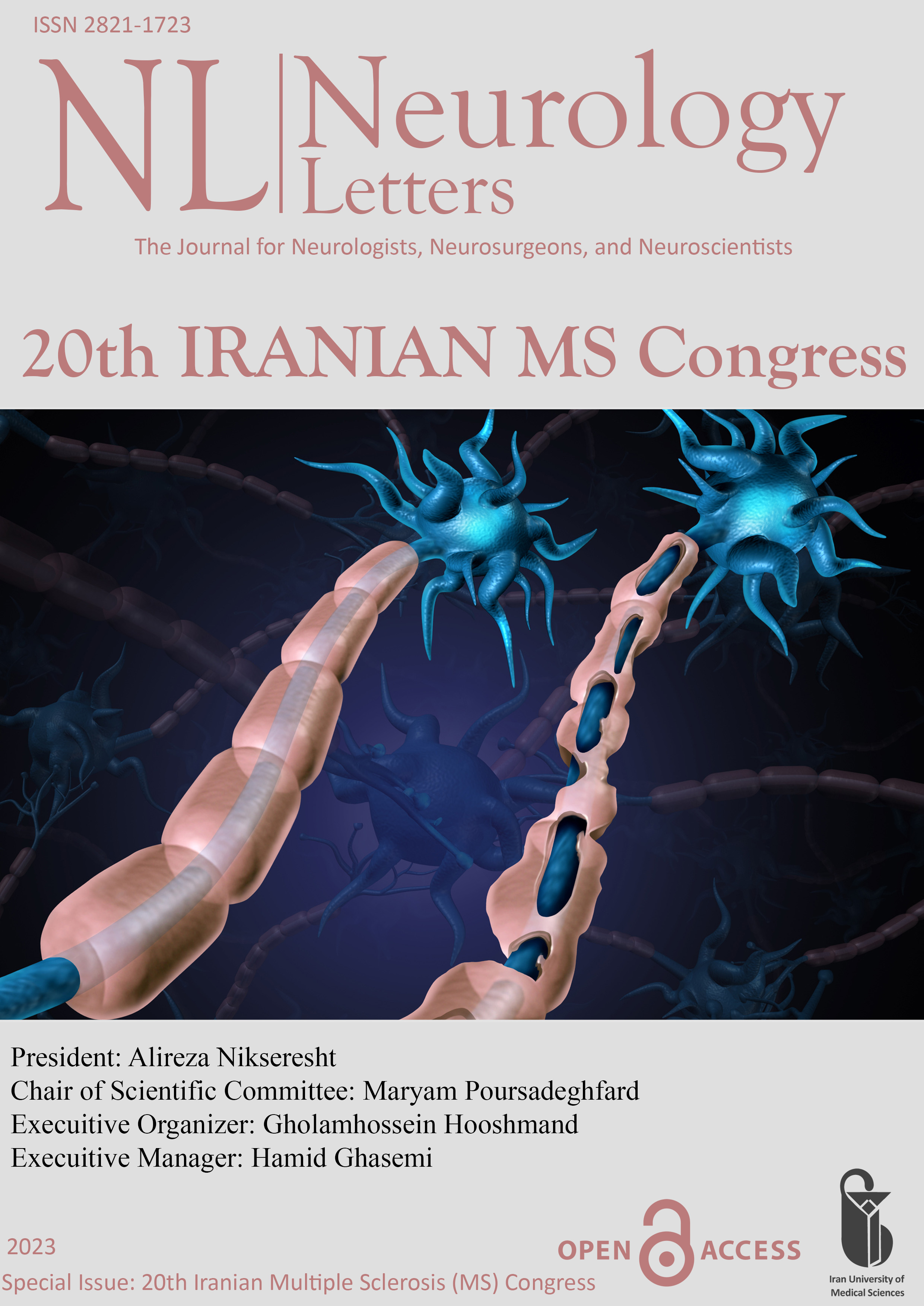Epidemiological view of national MS registry in Iran (NMSRI) (ORP-27)
Document Type : Oral Presentation
Author
Multiple sclerosis research center, Neuroscience institute, Tehran University of medical sciences, Tehran, Iran
Abstract
Background: Implementing a nationwide MS registry system of Iran (NMSRI) established in 2018 by the MS Research Center of Tehran to improve the quality of care in MS patients.
Objectives/Aims: The aim of the study is to the epidemiological view of MS in different provinces and ethnicities in Iran, the effect of patients’ disability, socio-economic status, and disease risk factors and enlighten the use of pharmacological treatments and their side effects.
Method: The population-based study consisted of all MS patients in the NMSRI who were registrars from 18 provinces of Iran including 24 medical universities, up to September 2023. All cases were diagnosed by neurologists. Information on baseline characteristics, MS type, Expanded Disability Status Scale (EDSS), familial MS, and prescribed disease-modifying treatment (DMT) were extracted. Diagnostic delay was defined as the time lag between disease onset and final diagnosis of MS. In total, 26344 cases were enrolled with a mean age of 36.71 years.
Results: The majority of 19947 (75.72%) were female. The mean age at the MS symptoms was 29.33 years and the mean age at diagnosis of MS was 30.37 years. Diagnosis delay was under one year in most cases. The diagnostic interval of 41.6% of patients was less than one month and 14.8% of them had one month time to diagnosis. The patients with age of onset below 18 years (mean±SD=21.19±46.79, P<0.001) and the patients diagnosed after the age of 50 years (41.06±68.51, P<0.001) had longer time to diagnosis. The mean±SD diagnostic interval for males (14.15±34.32) was more than for females (13.18±31.75, P=0.029). The patients with primary progressive MS had the longest time to diagnosis (23.65±42.13) and the relapsing-remitting type had the shortest time (11.72±29.38, P value<0.001).
Almost 14.5% of patients reported a family history of MS. The most common type of MS in patients was relapsing-remitting MS 15491 (58.8%) and secondary progressive 2564 (9.73%) respectively. The mean EDDS of patients was 2.19 and the EDSS score was significantly higher in women with a pregnancy history (P = 0.02) or abortion history (P = 0.04). The most commonly used drugs are Avonex/Cynnovex/Actovex in 6259 (23.76%) and Rituximab in 4495 (17.06%) cases, respectively.
Conclusion: The NMSRI could help in understanding the current situation of disease and improve the quality of care and conducting research projects on a wide international, national, or regional scale. The observed epidemiology of MS in Iran could help in understanding the current approach among Iranian neurologists and improve the quality of care delivered to MS patients through appropriate policy-making.
Keywords
 Neurology Letters
Neurology Letters
